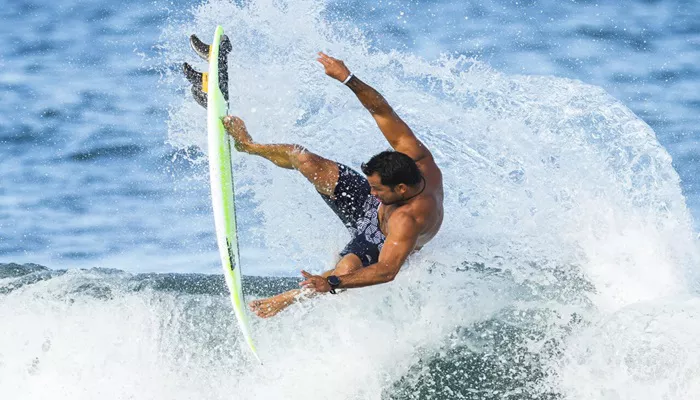Surfing is more than just a thrilling sport—it’s an intense full-body workout that challenges strength, endurance, balance, and flexibility. While it may look effortless when experienced surfers carve through waves, the sport demands significant muscular engagement. Every movement, from paddling out to popping up and maintaining balance, relies on various muscle groups working in unison. Understanding the muscles that surfing builds can help improve performance, prevent injuries, and enhance overall fitness. This article provides a comprehensive breakdown of the primary muscle groups strengthened by surfing and their functional benefits.
1. Upper Body Muscles Used in Surfing
Shoulder Muscles (Deltoids and Rotator Cuff)
Paddling is one of the most physically demanding aspects of surfing, and it heavily engages the deltoid muscles. The rotator cuff, consisting of the supraspinatus, infraspinatus, teres minor, and subscapularis, plays a critical role in stabilizing the shoulders and preventing injuries. Strong shoulders improve paddling efficiency, helping surfers navigate waves with greater endurance.
Back Muscles (Latissimus Dorsi and Trapezius)
The latissimus dorsi, commonly known as the lats, are the primary muscles used in pulling motions during paddling. These large muscles generate force to propel surfers through the water. Additionally, the trapezius muscles, extending from the neck to the mid-back, assist in maintaining good posture and providing stability when transitioning from lying to standing on the board.
Arm Muscles (Biceps and Triceps)
The arms play a crucial role in both paddling and popping up on the surfboard. The biceps are heavily involved in pulling movements during paddling, while the triceps contribute to pushing the surfer up when getting into a standing position.
Building arm strength enhances endurance in the water and improves maneuverability on the board.
2. Core Muscles Strengthened by Surfing
Abdominal Muscles (Rectus Abdominis and Obliques)
Surfing requires constant core engagement to maintain stability on the board. The rectus abdominis, or “six-pack” muscles, are responsible for flexing the torso and stabilizing the body during movements like paddling and popping up. The obliques, located along the sides of the torso, help with twisting motions essential for turning and carving through waves.
Lower Back Muscles (Erector Spinae and Multifidus)
The erector spinae and multifidus muscles provide essential support to the spine, allowing surfers to maintain an arched posture while paddling. A strong lower back helps prevent fatigue and reduces the risk of injury, particularly when absorbing impacts from waves and executing aerial maneuvers.
3. Lower Body Muscles Activated in Surfing
Quadriceps (Thigh Muscles)
The quadriceps are heavily engaged when surfers bend their knees to maintain a low center of gravity. These muscles help absorb shock when landing maneuvers and ensure control during turns. Strong quadriceps contribute to better endurance and improved board control.
Hamstrings and Glutes
The hamstrings work in tandem with the quadriceps to stabilize the lower body, while the gluteus maximus, medius, and minimus provide power for explosive movements. Strengthening these muscles enhances agility and prevents lower-body fatigue during long surf sessions.
Calf Muscles (Gastrocnemius and Soleus)
The calves play a significant role in balance and foot positioning. The gastrocnemius and soleus muscles help surfers adjust to the constantly shifting surface of the board, allowing for quick footwork and smoother transitions between movements.
4. The Functional Benefits of Surfing for Muscle Development
Unlike traditional gym workouts that isolate specific muscle groups, surfing promotes functional strength by engaging multiple muscles simultaneously. This full-body activation improves:
Endurance – Surfing involves continuous paddling, standing, and balancing, which enhances muscular stamina.
Coordination – The sport requires precise movements and quick reflexes, improving neuromuscular coordination.
Flexibility – Surfing engages muscles in dynamic movements, enhancing overall flexibility and reducing stiffness.
5. How to Strengthen Surfing-Specific Muscles
To maximize performance in the water, surfers can incorporate land-based exercises into their training routine. Some of the most effective exercises include:
Pull-ups and push-ups – Develop upper-body strength for paddling and popping up.
Planks and Russian twists – Strengthen the core for better stability.
Squats and lunges – Build lower-body power for maneuverability on the board.
Yoga and stretching – Improve flexibility and balance, reducing the risk of injury.
Conclusion
Surfing is a dynamic sport that develops strength across the upper body, core, and lower body. By understanding the muscles engaged in surfing, athletes can tailor their training to enhance performance, build endurance, and reduce the risk of injuries. Whether you’re a beginner or a seasoned surfer, strengthening these muscle groups will lead to longer, more efficient sessions in the water and an overall boost in athleticism and fitness.

